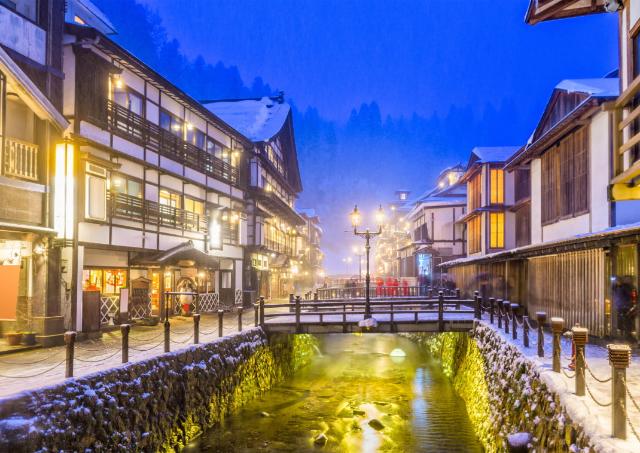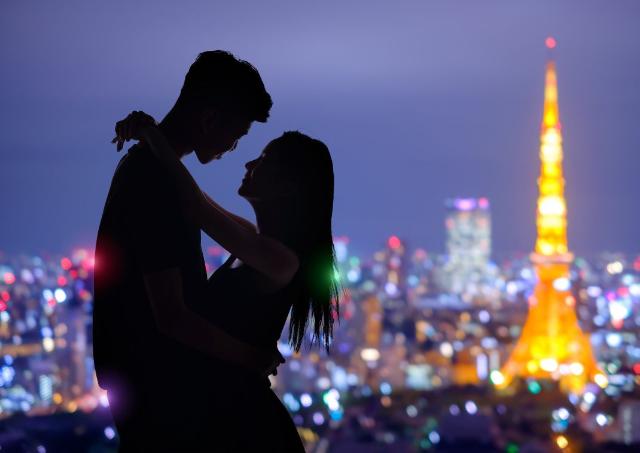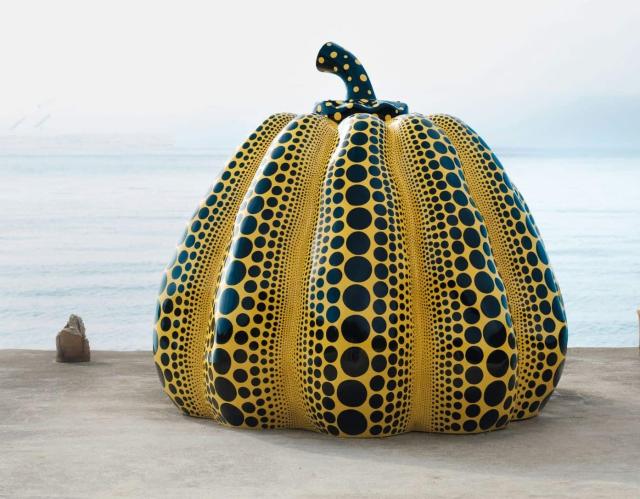The Ultimate Travel Itinerary: Japan, 10 Days
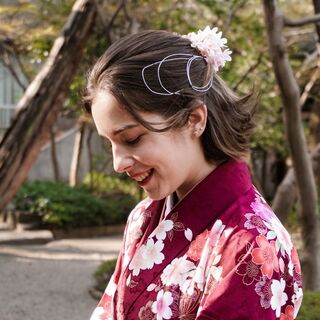
Japanspecialist
Budapest, Hungary
Travelling to any country for the first time is very exciting, but it can also be overwhelming trying to plan everything when you want it all to be perfect. And when it comes to visiting Japan, people want to make the most of their time here by travelling to different cities and experiencing everything they can in this amazing country and its natural beauty.
To take away from some of the stress, we’ve put together a 10 day Japan itinerary with day trips for your first ever trip to Japan. Of course, nothing is set in stone, so you can pick and choose what feels right for you, but having a base is an important first step! Planning a detailed itinerary for 10 days in Japan ensures you maximize your experience and enjoy all the diverse offerings.
As Tokyo is the easiest flight destination for most countries, this 10 day Japan itinerary starts and ends in Tokyo, with travel to other cities and day trips in between.
Preparation Beforehand: 10 Day Japan Itinerary
As there will be a lot of travelling on your Japan trip, you might want to consider getting a Japan Rail Pass (JR Pass: here’s everything you need to know) or a JR Regional Pass. This is a multi-day travel pass that will allow you to travel more easily, even on shinkansen bullet train, and cost-effectively between cities in Japan.
If you spend 10 days in Japan, and you want to visit multiple destinations, then the Japan Rail Pass or Regional Passes might be the best option for you. You’re required to book your Japan Rail Pass before you arrive in Japan, so make sure to look at the options before you travel.
Important Preparations
It is also a good idea to research some of the following points before travelling:
- Rental portable WiFi
- Rental SIM card or eSIM
- Weather forecast (and understanding whether it is rainy season or typhoon season) - Here’s how to decide the best time of year to visit Japan
- Transport or storage options for large luggage
Day 1: Arrival to Tokyo
On the first day that you arrive, whether you arrive early or late in the day, it’s best to have a relaxed day and try to get some rest to be in the best shape for your upcoming adventure of 10 days in Japan.
It can take an hour or longer to get to any central Tokyo accommodation and major train station from either Narita or Haneda airport. So, we recommend focusing on getting to your accommodation, resting, and then exploring the neighbourhood your hotel is in, rather than trying to do anything high-energy right away.
Tokyo is not only home to bright lights, great street food (monjayaki), futuristic skyscrapers (like the Tokyo Skytree and iconic Tokyo Tower) and high-end shopping districts (like Ginza and Omotesando). It's also a testimony to the history of the Shogun moving Japan's capital from Kyoto to Edo (Modern Tokyo). Decorative ancient temples like Senso-ji in Asakusa, the Imperial Palace with its impressive garden, and the Tsukiji Market with its freshest sushi are charming historical areas that should be a part of your 10 day Japan itinerary and will guarantee a wonderful experience.
Something that you might want to do is a map search for nearby bath houses (sento), parks and gardens, museums, or shopping malls. You will probably be excited to try your first meal in Japan, too. To ease you into Japanese cuisine, we have put together The Ultimate Guide to Japanese Food. Why not look for a conveyor belt sushi restaurant, a katsu curry restaurant, or a tempura restaurant nearby. Here are 5 must-visit Tokyo chain restaurants.
Tokyo is home to so many contrasts: Shinjuku, known as Tokyo's 'crazy entertainment district,' is filled with a variety of restaurants, shops, and attractions. Tokyo's Akihabara district is home to anime and manga shops, and anything that has to do with electronics. On the other hand, the Tsukiji Fish Market and the Toyosu Fish Market are historically Japan's largest fish market areas. The Tsukiji outer market offers a vibrant atmosphere and delicious seafood options, making it a must-see for fresh sushi lovers.
Day 2: Exploring West Tokyo: Shibuya and Harajuku
This is where the real fun begins! On day two, it’s time to explore Tokyo properly. Specifically, Tokyo’s west side, as today we’ll be in Shibuya, home to the bustling intersection known as the world famous Shibuya Crossing, and Harajuku.
Upon visiting Japan, staying near a centrally located train station is crucial for ease of travel between these vibrant areas and other major cities like Osaka, Kyoto, and Hiroshima.
Shibuya: World Famous Shibuya Crossing
Shibuya is a lively district full of shopping, amazing food, and sightseeing opportunities. It is home to Shibuya Scramble Crossing, known as the busiest pedestrian crossing in the world! People mostly come here for shopping in the boutique stores of Shibuya 109, Parco, or Miyashita Park, finding home goods at Loft or Tokyu Hands, or exploring the multi-storey Don Quijote store, full of all sorts, from accessories to food.
In 2019, a new building called Shibuya Scramble Square was opened, which is an impressive 46-storey building filled with shops and restaurants. But it is also where you will find Shibuya Sky, which is a stylish observation deck where you can see the entirety of Shibuya and Tokyo from above.
While in Shibuya, you may opt for joining a food tour. This food tour will take you beyond the surface of neon lights and into the diverse world of Tokyo's gastronomy.
Harajuku
Then head to Harajuku, where you can go street food hopping and shopping on Takeshita Dori and explore various food stalls or go for a sit-down meal. Some of the great options in the area are Sakura-tei for an okonomiyaki (savoury filled pancake), Gonpachi for fancy hand-rolled sushi, or any of the more western-style options like TGI Fridays.
In Harajuku there are a wealth of things to do. While Takeshita Dori is a popular street for trendy and boutique fashion stores, it can be very crowded and is not for everyone. For more modern clothes shopping, you can head to Tokyu Plaza Omotesando, Harakado, and Laforet Harajuku, or for second-hand shopping, head to Cat Street and beyond, where you’ll find stores like Flamingo, Amore, and Bazzstore.
In Harajuku you’ll also find the Meiji Jingu Shrine, dedicated to the family of Meiji Emperor, and Yoyogi Park, which is a popular cherry blossom spot, right next to each other. These are both beautiful areas to walk, and you’ll come across different areas that are much quieter than the city streets outside.
Finish your day with a meal in Harajuku or Shibuya or look for an izakaya (Japanese pub) in Shibuya's Omoide Yokocho or Shinjuku's Golden Gai.
Day 3: Discovering East Tokyo: Ueno and Asakusa
Now it’s time for some tradition and Japanese culture in eastern Tokyo, in Ueno and Asakusa.
Ueno
Ueno is a great place to start the day by exploring Ueno Park. The spacious park also houses various museums (like the Tokyo National Museum, the Tokyo Metropolitan Art Museum, and The National Museum of Western Art), shrines (like the Ueno Toshogu Shrine and the Hanazono Inari Shrine), temples (like the Shinobazunoike Benten-do and the Kiyomizu Kannon-do), and even the Ueno Zoo, so you’ll have plenty to do just exploring!
At lunch time, you can go hunting for street food on Ameyoko (America Alley), where you’ll find amazing food like takoyaki (dough balls with octopus), and karaage (fried chicken). Or you can venture into Atré, a shopping mall within the station. While stations don’t seem like the most exciting place for food, in Japan they often have a good selection of quality food that you can explore to find what you’re in the mood for.
Asakusa
Then head to Asakusa. There you will find the famous and ancient Senso-ji Temple, standing proud since its foundation in 645 AD. The street leading up to the temple, Nakamise-Dori, is full of interesting souvenir shops and snacks, too. You could get Edo-style street foods, a myriad of different types of mochi, matcha tea and lattes, Japanese traditional clothing like kimono and yukata, which you can often rent out as well, and explore the area wearing them - it makes for such a memorable Japan trip!
Senso-ji temple is also very close to Sumida River, which is a lovely place to walk by, especially during cherry blossom season. The Sumida Park is dotted with cherry trees all along the river, and you also have the chance to take a Sumida River boat cruise from the Tokyo Cruise station at the Azuma Bridge.
Finish your day off by visiting Tokyo Skytree, where you can see a magnificent night view of Tokyo. On your way, visit one of the restaurants on the viewing decks (our recommendation is 634 Musashi and Skytree Cafe), or at the bottom of the skyscraper at Tokyo Skytree Town, as many of the higher floors have great views to the Skytree, too.
Day 4: Day Trip from Tokyo: Kawagoe, Nikko, Kamakura or Mount Fuji
If you have a lot longer in Japan, you could easily spend weeks exploring the many different neighbourhoods of Tokyo. But it would be a shame not to explore some of the areas nearby on a day trip, if you are in Japan for ten days!
The shinkansen bullet train is an efficient and convenient travel option for a day trip from Tokyo, making it easy to explore destinations like Hakone with its hot springs, cable car and Hakone Open Air Museum, Mount Fuji with its Fuji Five Lakes, and Nikko with its traditional ryokan and ancient shrines dedicated to historical shoguns.
We have 5 top day trip recommendations from Tokyo on our blog, but the easiest day trip from Tokyo is to visit Kawagoe. This delightful city is just an hour away by JR train from Tokyo Station, or half an hour by Tobu line from Ikebukuro Station.
The city is known for its traditional Edo-style architecture that creates a completely different atmosphere to central Tokyo. There you can try on a kimono, ride in a rickshaw, explore temples and shrines, and immerse yourself in the ambiance of this charming town.
Some other possible day trip locations from Tokyo are Nikko, Kamakura, and Mt. Takao. Mount Fuji is also a central attraction for day trips from Tokyo, offering stunning views and various activities like cable car rides, traditional ryokan stays, hiking, and sightseeing tours. Mount Fuji is also one of our top recommended spots for a romantic honeymoon.
Day 5: Kyoto and Uji: Traditional Tea Ceremony
On the next day of your 10 day Japan itinerary, it’s time to head from the Kanto region to the Kansai region, by visiting Kyoto, a staple for any Japan itinerary. The bullet train from Tokyo Station to Kyoto Station takes around 2-3 hours depending on the type of train, so it is best to leave as early as you can muster if you want to explore Kyoto on that day!
Make sure to get a special seat if you have oversized luggage or use a courier like Yamato Transport to send your luggage to your next hotel.
In central Kyoto, things can get very crowded. So, we recommend visiting one key location in Kyoto in the first half of the day, then heading to Uji, the home of Japanese green tea for the second half. Choose your favourite out of the Golden Pavilion (Kinkaku-ji), Nanzen-ji Temple, Kiyomizudera Temple and Sannen-zaka, or the Arashiyama Bamboo Forest.
The Kinkaku-ji is a must-see attraction in Kyoto, known for its stunning golden exterior and picturesque reflections in the nearby lake. While the Arashiyama area is home to not only the amazing bamboo forest, but also Zen Tempes (Tenryu-ji), river cruises (Katsura River), the Iwatayama Monkey Park, and cute cafes (eg. Kumo no Cha) and souvenir shops. And don't worry: whatever you miss today, you can do tomorrow morning!
After your chosen sight in Kyoto, head to Uji Station by JR train for your half day trip, which is about half an hour from Kyoto Station (but remember you may be far from Kyoto Station at this point!).
In Uji, explore the streets and look out for green tea and green tea flavoured snacks, as Uji tea is well-known across Japan for its quality. Then visit the stunning architectural masterpiece, Byodo-in Temple. Have a tranquil dinner in Uji, or head back to Kyoto to find something fancy.
Day 6: Kyoto and Nara
Whichever key place you didn’t get to visit yesterday in Kyoto, you can get up bright and early to visit today. We highly recommend going early in the morning to any of the major tourist spots, as you will get the best pictures before the peak crowded times set in.
A great option is to get to Sannen-zaka and Kiyomizudera Temple before 9am. Visiting a UNESCO World Heritage Site like these offers a unique glimpse into Japan’s rich cultural and historical heritage.
Have an early lunch by going for street food at Nishiki Market or find a place to grab a meal near the Kamo River in the Potoncho or Gion district.
Then head to Kyoto Station, and take the Kintetsu or JR line until Nara, which is about 40 minutes from Kyoto. Don't forget to use your JR Pass when you take JR trains!
Nara is a perfect destination for a day trip from Kyoto (and even worth spending a few days in Nara), and a must-visit spot on your Japan trip. The area known is for its friendly shika deer! You’ll find most of them chilling around Todai-ji Temple and in Nara Park, and there are various stalls where you can buy special crackers for the deer.
After exploring Nara, head back to central Kyoto and get some rest, because the next few days feature a lot of travelling. For relaxation and wellness experiences, consider visiting one of the hot springs in downtown Kyoto. Makoto-no-yu is one of our favourites!
Day 7: Osaka Castle and Dotonbori
Depending on the route you take, Osaka Station is about 30-60 minutes on the train from Kyoto Station.
Osaka has much more of a city vibe than Kyoto, with lots of high-rise buildings and shopping streets. While you’re near the Osaka Station, you can head to the Kuchu Teien Observatory to get a view of the entire city from up high.
But before you delve into the city streets, stop by Osaka Castle for your morning activity to learn about the history of the city, and take your time to look around the grounds. If you visit Japan in cherry blossom season, hundreds of blooming cherry trees will surprise you at Osaka Castle Park.
After the amazing Osaka Castle, head to the Dotonbori district for amazing food, shopping and photo opportunities! Here you can find fun second-hand shops, high-end brands, and even temples and shrines. Go upstairs in the Don Quijote shop to even have a ride on the giant Ferris Wheel! Some food to look out for in Osaka is takoyaki (dough balls with octopus) and okonomiyaki (savoury filled pancake).
Alternatively, explore the retro town of Shinsekai: a vibrant, retro district known for its nostalgic 20th-century atmosphere, iconic Tsutenkaku Tower, and a lively street food scene featuring local specialties like kushi katsu (deep fried skewers).
Day 8: Hiroshima, Children's Peace Monument, and Miyajima
For our final day in the Kansai region, we’re heading to a day trip to the beautiful area of Hiroshima. It takes around 1.5 hours to get to Hiroshima Station from Shin-Osaka Station - it’s important to note that the bullet train does not go from Osaka Station.
Start your time in Hiroshima by heading to the Hiroshima Peace Memorial Museum. This marks a tragic time in Hiroshima’s history, when the atomic bomb hit the city in 1945. The museum is in the centre of the city’s largest green space, the Peace Memorial Park. The city is committed to creating an atmosphere of peace, and the topics covered in the museum can be heavy, so we recommend allowing plenty of time so that you can walk around the park afterwards to process and take in the peaceful scenery.
A significant part of the sightseeing experience in Hiroshima is visiting the Children's Peace Monument, which stands as a poignant reminder of the impact of the atomic bomb and a symbol of hope for world peace.
Continuing with peaceful and leisurely exploration, you can then visit the Hiroshima Castle and the Hiroshima Gokoku Shrine. These are not as large or extravagant as ones you may see in Kyoto or Osaka, but they are great places to feel some of Hiroshima’s tradition.
As for food, it is essential to try Hiroshima's okonomiyaki here! The difference between Hiroshima style and other styles of okonomiyaki is that in Hiroshima, noodles are cooked into the pancake, giving it extra volume. It might sound strange, but the result is delicious!
If you have a few more days and would like to add an additional day trip to your Japan trip, grab your JR Pass and head to Miyajima for a day. Of, if you want to experience both Hiroshima and Miyajima in a day trip, take our 1-day excursion.
Day 9: Visit Himeji and Travel Back to Tokyo
After all that travelling and exploring, it’s time to head back to Tokyo and wrap things up. It takes around 4 hours to get from Hiroshima Station to Tokyo Station.
One expert tip we have, is to include Himeji on your way back to Tokyo. Using your Japan Rail Pass, take the shinkansen bullet train at Hiroshima Station, and simply get off at Himeji Station. Himeji is home to Japan's most majestic castle, the Castle of the White Heron: Himeji Castle (also a UNESCO World Heritage Site).
Its walls are bright white, and you can climb all the way up to the top of the wooden-structured ancient castle. It is simply a must-include destination for your first 10 day Japan itinerary, and a sight you will treasure forever.
Heading on to Tokyo, if you want to explore more of the city, make sure to reach as early as possible, and then visit anything you haven’t got around to yet. Some options for an afternoon or evening in Tokyo are to visit the Skytree, Tokyo Tower, the Tsukiji Fish Market, the Samurai Restaurant (formerly Robot Restaurant), or to have a fancy dinner in Ginza or Ebisu.
Make a memorable finish to your 10 days in Japan with enjoying the city vibes of Tokyo, for example from a rooftop bar like Ce La Vi in Shibuya, and getting your last batch of souvenirs from Don Quijote, Loft, Uniqlo, and all the Japanese brands you can't get abroad.
Day 10: Last Stops in Tokyo
On your last day, it’s good to work back from your flight time to figure out what you can do with your day. You need to be at the airport two hours before your flight, and it typically takes around an hour or so to get to either international airport.
If you don’t have long and want to be near the airport, both airports have nearby cities with things to do. Haneda Airport is in Ota ward, which is the birthplace of “winged” gyoza (fried dumplings with a crispy outside), and has a lot of sento (public bathhouses). The airport itself also has a fancy facility for shared baths if you haven’t tried this part of Japanese culture yet.
Narita Airport is in Narita city, which has a traditional townscape with a shopping street, and is filled with gardens, shrines, and cute spots to eat.
Otherwise, you can use your last day to do last-minute shopping and exploring. Visit a Pokémon shop, go to a themed or animal café, or visit one of Tokyo’s many sprawling parks and gardens (eg. Shinjuku Gyoen or Hamarikyu Garden).
After all your adventuring having explored Tokyo, Kyoto, Mount Fuji, Uji, Nara, Osaka, Hiroshima, Miyajima and Himeji, it will be hard to say goodbye to Japan. But with a good plan in place, you can make sure you have hit all your favourite spots! If you’re planning a holiday with your family, have a look at our tips for making the most of your time here. The memorable experiences will surely make you want to visit Japan again.
Insider Tips from Travel Consultants at Japanspecialist
Plan Your Itinerary Wisely
On your first trip to Japan, focus on exploring a wide range of what Japan has to offer: a mix of urban and rural experiences. Popular cities like Tokyo and Kyoto are must-visits, but also consider visiting less crowded areas such as Kanazawa, Mount Fuji or Takayama for a more authentic experience.
Use a JR Pass
Get a Japan Rail Pass (JR Pass) for unlimited travel on JR trains, including the shinkansen bullet train. This pass can save you money and make travel between cities like Tokyo, Kyoto, and Osaka seamless.
Learn Basic Japanese Phrases
While many Japanese people understand some English, knowing basic phrases like "arigato gozaimasu" (thank you), "sumimasen" (excuse me/sorry), and "konnichiwa" (hello) can be helpful and appreciated.
Take Cash
Even though credit cards are widely accepted in big cities, smaller towns and some places like traditional markets may only take cash. ATMs are available at convenience stores like 7-Eleven, Family Mart, and Lawson.
Pack Light
Japanese trains and buses have limited space for large luggage. Consider packing light or using luggage forwarding services (like Yamato Takkyubin) to send your bags ahead to your next destination.
Respect Local Etiquette
Familiarize yourself with Japanese etiquette, such as removing your shoes before entering someone's home or certain accommodations, not talking loudly on public transportation, and queuing properly.
With following these tips, you can make your first Japan trip smoother and more enjoyable!
Plan your trip with us
Get in touch with one of our travel consultants, they are ready to help you create the trip you always dreamed of.
Online Consultation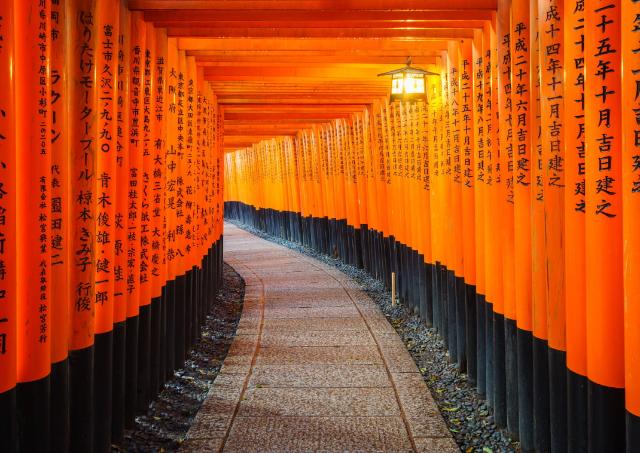
You may also be interested in these articles
Lost near the city of Obanazawa, seated in a green setting that would make Shinjuku Park jealous, far from the turmoil of the urban landscape, you can find the […]
A selection of the most romantic and dreamiest places in Japan. Be careful, you will want to book a second honeymoon!
More than just a Yellow Pumpkin: Naoshima, known as Japan’s art island is the perfect place to spend a few days among art, culture and creativity by the sea.

